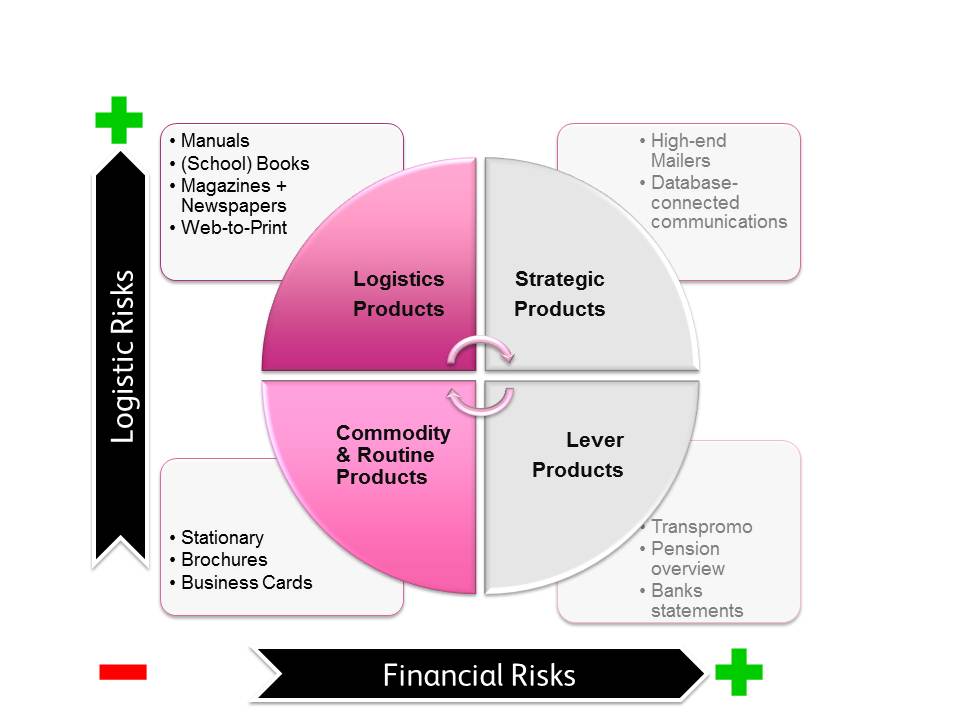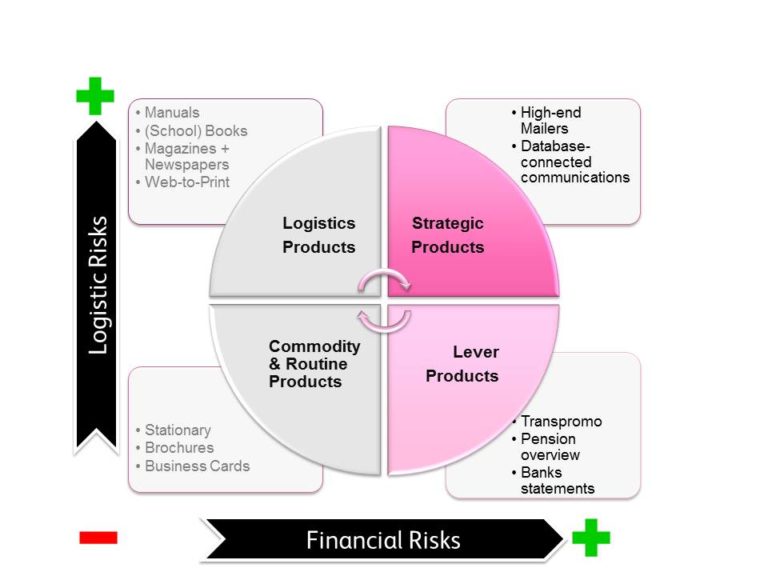Written by Dharminder Biharie,
Business Development Manager Xerox Graphic Communications, The Netherlands
In my role as business development manager, relationships are everything. Building and sustaining relationships is a journey I enjoy to experience, and it all starts with my customers and helping them succeed.
I visit many customers. I have seen almost everything. From traditional printers to heavy e-commerce driven organizations…and everything in-between. And over the years, you start to see the differences between organizations. Companies who succeed have one major trait in common: Focus.
Not hocus pocus…but focus! Focus on things that matter. As Steve Jobs would say, cut the crap. And to be honest, I agree with him.
I use a quadrant model when working with clients to analyze their business. Today we will look at the first two quadrants and I will explain why this quadrant model is useful and can help to simplify your future.
Getting Started
Everything that is made in the industry has financial and logistical risks. From the cultivation of potatoes to the manufacturing and assembling of Apple iMacs or Xerox iGen digital presses.
In smart processes, the financial and logistical procedures and risks are considered in whether it is deemed a profitable operation.
1. Commodity & Routine Products: Low Financial Risk/Low Logistical Risk
Commodity and routine products are products that you can buy everywhere. Think of a bottle of Coca Cola. You can buy them at any supermarket, gas station or McDonalds…so basically on every corner. Is it unique? No, absolutely not. Graphic Arts products that fall in this quadrant have the same challenge: Price Pressure.
These are products that you can buy anywhere…even through the web. Think stationary, business cards, brochures, etc. There are companies like Vistaprint who have made an entire business model out of this. The reasoning is simple: operational excellence. Everything must be as efficient as possible. Automation is the name of the game. Unfortunately, 80% of the Graphic Arts industry in the Netherlands is competing in this segment…and I don’t believe the rest of the world is doing any better.
This business model is highly price driven: those who come to you for the lowest price will also leave you for the lowest price. You see, many companies that have not yet automated (such as with web-to-print) have a very busy business back office. And with small margins, it is very complicated to be profitable.
2. Logistics Products: Low Financial Risk/High Logistical Risk
Logistics products are characterized by Time-to-Market or Just-in-Time concepts. Think of newspapers, magazines or on-demand books. You need to deliver a product in a certain time frame. Web-to-Print is a prime example of a logistics process. Web-to-Print is a way to optimize your order flow. Let’s examine:
For every Euro or Dollar you spend on print, there is often 6 to 7 Euros or Dollars spent on the front or back ends of the process. When looking for a new printing press for your business, basing your purchase decision solely on the cheapest click charge is not a wise business strategy for survival. You need to manage your cost in the pre and post-press processes if you want to make money.
In the old manual process, it is often said that you have countless steps and human touches, but with Web-to-Print you can drastically reduce the number of human touches and steps. For instance, I’ve worked with customer who have upwards of 20 steps for certain jobs, but with a Web-to-Print system in place, was able to cut the number of human interventions down to just 4 steps. And with some street smarts, you will still send an invoice for 8 steps!
That’s margin, that is a healthy turnover. That’s why you have a high-risk logistics but low-financial risk. After all, the price per product ordered is not in the thousands of dollars. The average order value is low.
What’s Next?
Are you intrigued by this way of thinking? Next week we will discuss two more Quadrants: Strategic Products and Lever Products. We’ll also discuss how you can apply this model and way of thinking to your business. Stay tuned!
—
![]() Dharminder Biharie is a Business Development Manager within Xerox Netherlands. To get in touch with Dharminder, feel free to contact him via email.
Dharminder Biharie is a Business Development Manager within Xerox Netherlands. To get in touch with Dharminder, feel free to contact him via email.
5 Comments
Comments are closed.




I am looking forward to the subsequent posts. This is good content!
Hi Cliff, thanks for the feedback. I hope this will help to clarify your business and if you have questions: drop a e-mail:-)
I look forward to reading Part 2. Thanks, Dharminder!
Thanks for the fantastic feedback, Cliff and Melissa. The second part of Dharminder’s post will publish on Tuesday.
Bill (Xerox)
Hyiii…,
This post is all about the business development.Really,its highly required in business sector.Thank you for sharing this valuable information.